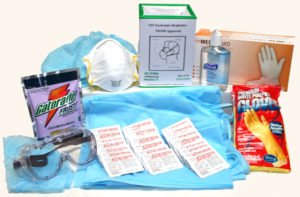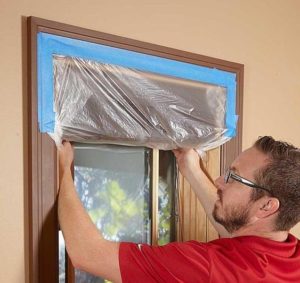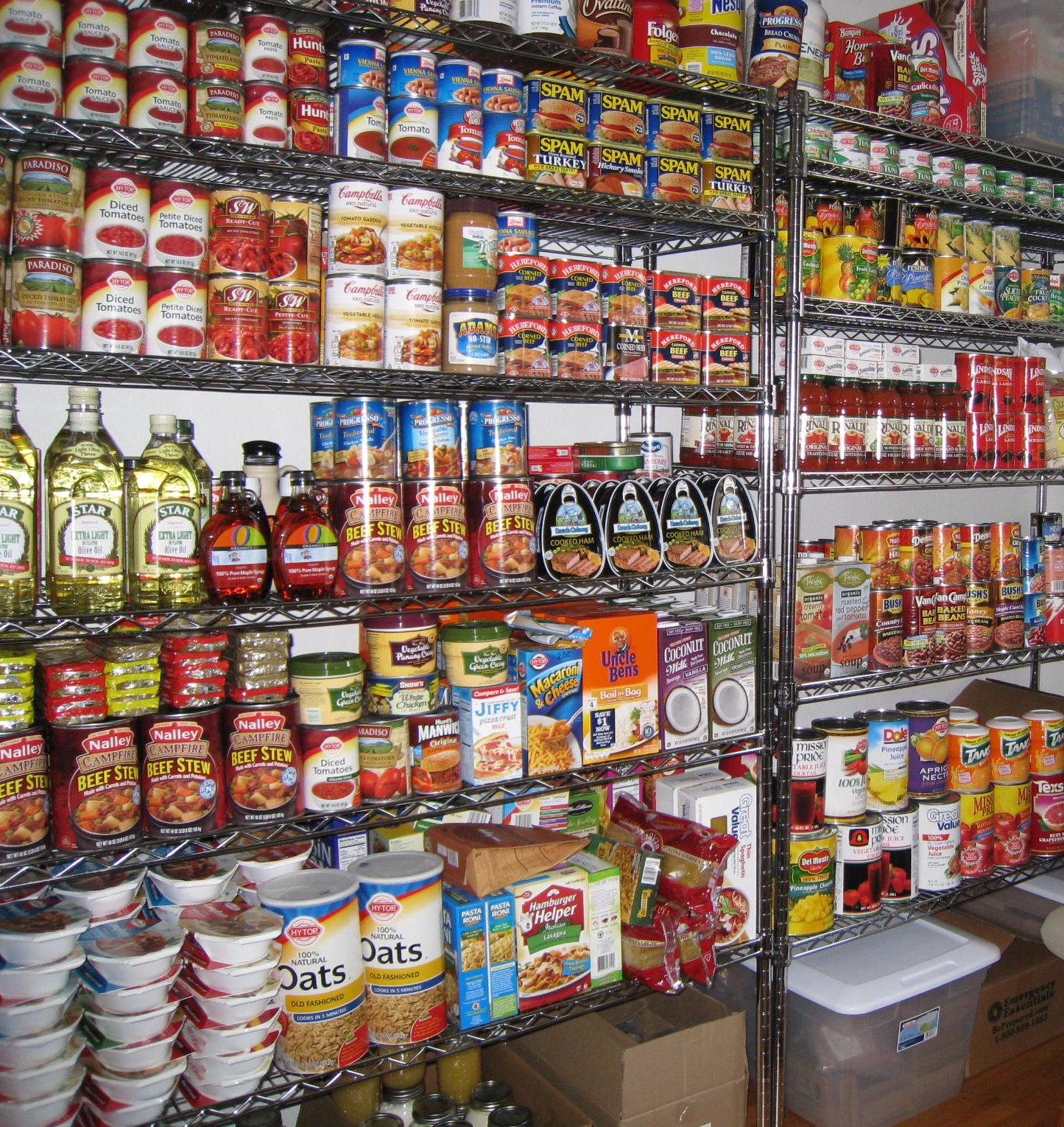July 9, 2024 | Medical - First Aid, Temporal Preparedness | No Comments

When a deadly sickness rapidly spreads over a whole region, country or even the world, it is called a pandemic. A pandemic is known to emerge suddenly, often without warning, and be very infectious causing it to spread expeditiously.
Pandemics have been the deadliest threats in the history of mankind and have taken the lives of more individuals than all wars and accidents combined. Nobody can predict when a pandemic might occur.
The use of contagious agents like bacteria and viruses to cause the death or incapacitation of a population is called a pandemic biological warfare.
Note, any links included in this blog post are non-affiliated with DIY Preparedness and are only included to be helpful to the reader.
The way to survive a pandemic is to ISOLATE yourself from people who are infected.
The question is:
Would you be ready to quarantine yourself and your family for up to 1-3 months+ if needed?
At the onset, you may not know who is infected until it’s too late. When a pandemic is just starting, most people will be clueless to the ramifications. Everyone will continue to move about their daily routines as usual, going to work, school, and public places. They unknowingly will be exposing themselves to the toxic germs of the pandemic.
Most infectious diseases have a time of incubation where signs of the sickness are not prevalent yet in the infected individual. This can leave the person contagious for one to three days before they even show signs of having it. If someone in your family becomes infected, he or she must be isolated to protect the rest of the family from being infected. Any guests entering your home should also be isolated for a time to ensure they are free from the disease.
Home Quarantine
Preferably, a quarantine area should be in a separate building from where you are living; like a garage, empty house, barn, or outbuilding. If that is not an option, try to choose a room in your home that has a window or way to vent to the outside. Shut off or disconnect any duct-work or venting in that room that connects with the rest of the home. You can leave a window cracked in that room, so the flow of the air will come from the other parts of the home and exit through the window.
4 Simple Ways to Prepare for a Pandemic,
Using Your Home For Isolation:
1) Increase Your Storage of Water

Water is the MOST important thing to store for a pandemic because it will be needed the most. You will need water to:
- Keep hydrated and flush out toxins in your body
- Wash bedding, clothes, etc.
- To boil water to sterilize things
- Wash floors, walls, and keep the area clean
- To make food with
You cannot store too much water. It’s best to store a minimum of 1.5 gallons of water per person per day for 2 weeks, longer if possible. Along with water, include a water purifier. This helps in case the water becomes contaminated, and for an extra safety measure. Two kinds of purifiers we use are Sawyer and Berkey, but you can use whatever works best for you. You can even store equipment needed to distill water. For more information on water storage and purification, read our post here.
2) Build Your Inventory of Food Storage
During a pandemic, going to public places like grocery stores to obtain food will not be a safe option. What you have in your home that is already safe is best. So, begin storing food now if you haven’t already. Start will a minimum of 3 months of food for your whole family and try to work your way up from there. We think in terms of 3 different types of food storage:
- Ready to Eat Meals. These are meals that you do not need to do anything with, they are ready to open and eat. These include MREs, canned soups, canned ravioli & spaghetti, canned chili, shelf-stable microwave meals, freeze dried fruits, dehydrated fruits, shelf-stable milk, etc.
- Ready to Make Meals. These are meals that require some time to make or cook, but all the ingredients are there and they’re ready to make. These include just-add-water foods like Freeze dried and/or dehydrated meals. Also, foods like pasta and pasta sauce, canned meats and crackers, 9-can soup, oatmeal packets, dehydrated meals-in-a-jar, home canned soups and vegetables, cold cereal & shelf stable milk, peanut butter & jam, granola, just-add-water pancake mix, etc.
- Longer Term Food Storage. These are the foods you will eat after you run out of the other two. These foods take more time to prepare into meals, but they store for a long time. They include grains, oats, rice, legumes, beans, macaroni, dry milk, other canned goods, raw honey, sugar, cooking oil (olive oil & coconut oil), popcorn, sea salt, spices, powdered butter, powdered cheese, powdered eggs, etc. You may even want to store some candy that can help be a comfort in the long term.
3) Add to Your Stockpile of Medical Supplies and Knowledge

It’s imperative that you have items on hand to take care of anyone that might get infected in your home and to prevent anyone from getting infected. Consider keeping all of your Pandemic Supplies in a large bin. Here is a list to keep in mind, including some essentials:
- Immune boosters like: Vitamin C, powdered Vit C, Garlic pills, and Echinacea
- Medications for: Congestion, Antidiarrheal, Inflammation Reducers, Fever Reducers
- Essential Oils: Frankincense, Oregano, Eucalyptus, Tea Tree, Lemon, Peppermint
- Essential Oil diffuser and a few gallons of distilled water to use in it
- Thermometers
- Medical book volumes like: The Survival Medicine Handbook and the Doomsday Book of Medicine
- N95 face masks – pack of 40 or more and a 3M reusable respirator mask for each family member
- Nitrile Exam Gloves (Costco usually sells these at a good price)
- ReadiMask disposable eyeshield – adhesive sealing for when going out among those who are sick
- Disposable Boot/Shoe Covers
- Disposable Coverall Suit – one per person
- Hand Sanitizers
- Clean washcloths and/or clean cloth diapers
- Electrolyte Tablets – helps to keep you hydrated and relives fatigue and muscle cramping
- Basic trauma kit to deal with injuries, cuts, burns, etc. It’s imperative that any skin damage or cuts are treated to decrease infection and contamination through the injury.
4) Protect Your Home from Contagions

You will want to have a way to keep the air in your home clean and the area you are using as a quarantine sectioned off. If plumbing is not functioning, you need a plan to dispose of waste and other items needed to keep your home protected. Here are some things you will want to have on hand to help:
- Clear plastic sheeting that is minimum of 4 ml – enough to block off your quarantine room well
- Duct tape – several rolls, these help in setting up the plastic sheeting
- Liquid bleach – 5 gallons per family member in your home (bleach has a shelf life so rotate)
- Sanitizing tablets – can be used for cleaning, and they store longer than liquid bleach does
- Aggressive anti-grease soap like Dawn Ultra
- Plenty of anti-bacterial soap for hand washing
- Heavy duty trash bags
- Kitchen trash bags for ordinary trash
- HEPA Filters
- Plenty of toilet paper – approx. 100 rolls per person
- Plenty of paper towels – approx. 20 rolls per person
- Portable toilet – 5-gallon bucket toilet or a bedside commode
- Heavy duty 3 MIL thick bags for provisional toilets
- Kitty Litter – 25 lbs per person (helps clean up bodily fluids)
A pandemic today could wipe out or immobilize a considerable portion of our population. Due to the lack of people working, it could cripple our infrastructure and leave the remaining people without services or grocery items for several weeks or months.
Being prepared for home isolation should a pandemic occur can help you and your family get through it and also give you peace of mind.
Some Great Resources:
Images courtesy of: my-ear-trumpet.tumblr, MySafetySign, raconteurreport, BirdFluSmart, and Handyman
home quarantine, medical preps, Pandemic, pandemic biological warfare, plague, Prepare for pandemic




